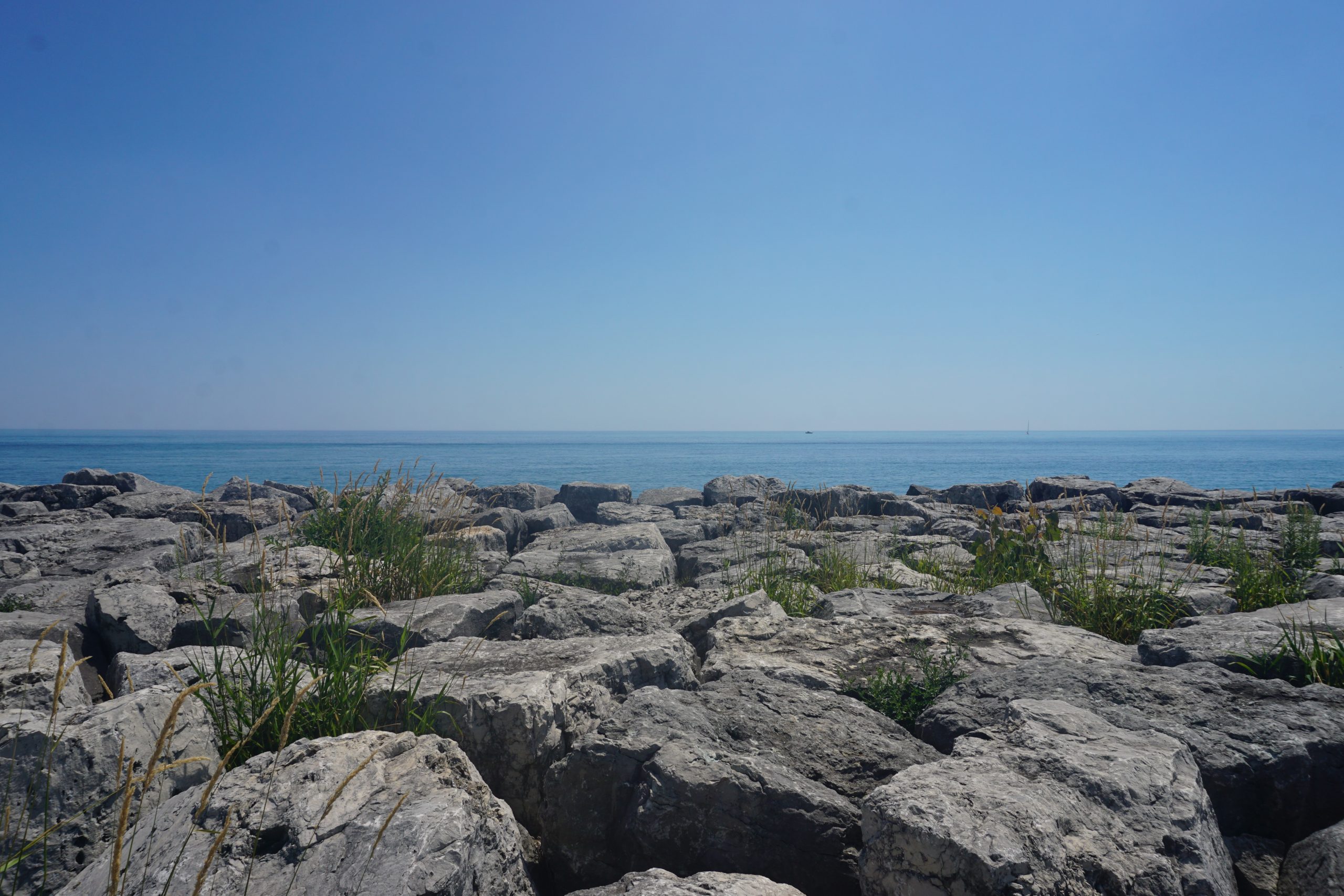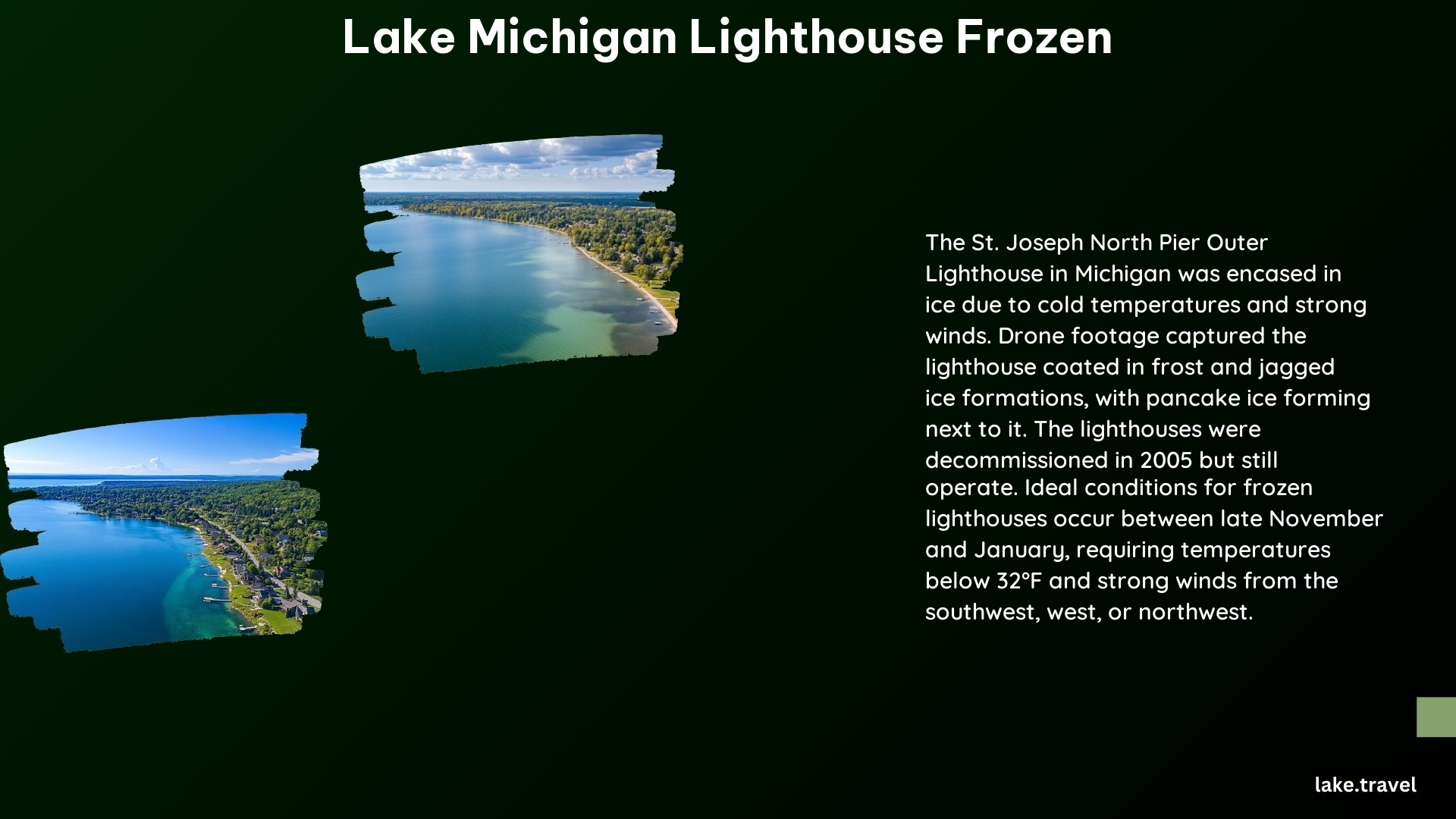Lake Michigan lighthouses are a popular tourist attraction, especially during the winter season when they become encased in ice. The formation of ice on these lighthouses is a unique and breathtaking sight, attracting visitors from all over the world.
What Causes the Formation of Ice on Lake Michigan Lighthouses?

The formation of ice on Lake Michigan lighthouses is a result of a combination of cold temperatures, strong winds, and wave action. The process begins when the temperature drops below freezing, causing the water around the lighthouse to freeze. Strong winds from the southwest, west, or northwest then kick up the waves, which crash against the lighthouse, splashing water that freezes into ice. This process can result in several feet of ice accumulation within a few hours.
How Does the Wind and Wave Action Affect the Ice Formations Around Lake Michigan Lighthouses?

The wind and wave action play a crucial role in shaping the ice formations around Lake Michigan lighthouses. The strong winds and high waves cause the water to splash and freeze, creating a thick layer of ice that encases the lighthouse. The direction of the wind also affects the formation of the ice, with winds from the southwest, west, or northwest causing the most dramatic impact.
Unique Ice Structures Around Lake Michigan Lighthouses
During winter, Lake Michigan lighthouses are surrounded by unique ice structures, including:
- Pancake Ice: A rare phenomenon that forms when the water is rough, causing the layer of ice crystals to break up and form semi-circular discs of slushy ice.
- Ice Balls: Spherical formations of ice that can range in size from a few inches to several feet in diameter.
- Ice Volcanoes: Cone-shaped structures of ice that form when water is forced up through a hole in the ice and freezes.
- Ice Shelves: Large, flat sheets of ice that extend out from the shoreline and can be several feet thick.
Best Time to Visit
The best time to visit the frozen lighthouses is between late November and January, when the weather conditions are most likely to be conducive to ice formation. It is essential to check the long-term weather and wind forecast for ideal wind speeds and temperatures before planning a visit.
Safety Precautions
Visitors are advised to exercise caution when visiting the frozen lighthouses. It is crucial to avoid walking on icy or wave-swept piers and to view the lighthouses from the safety of the land. The best viewing spots include Silver Beach County Park for the South Pier beacon and the area near the North Pier’s inner and outer lighthouses and catwalk.
Photography Tips
Renowned photographer Joshua Nowicki provides valuable tips for capturing stunning winter photos in Southwest Michigan. Using a drone is also an option for getting closer views without going out on the piers, but commercial operators must have an FAA license.
Plan Your Visit
To plan a visit to the frozen lighthouses, create a custom itinerary that includes lighthouses to visit, winter activities, and accommodations. Contact the local tourist information office for more information.
